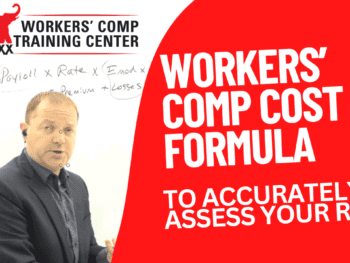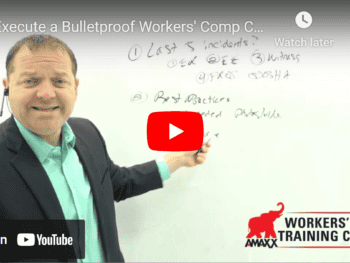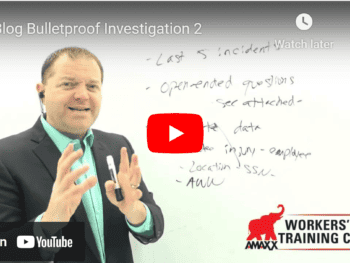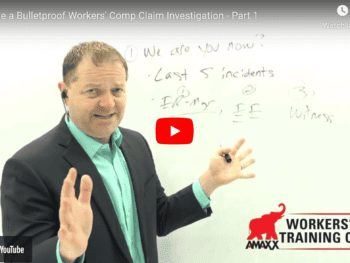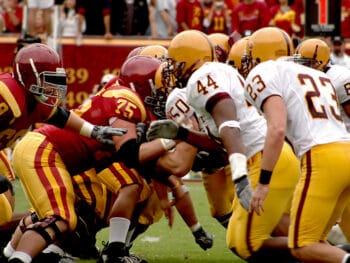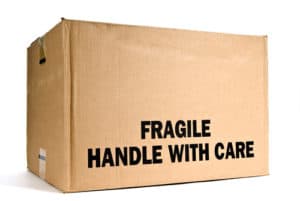
In addition to getting the right treatment to the injured worker as soon as possible and demonstrating care and concern for the employee as well as his family, it is also vital to investigate these claims as thoroughly and as quickly as possible. In addition to the best practices for claims handling, there are additional strategies that can ensure the best outcomes for employees, employers, and payers.
Click Link to Access Free PDF Download
“13 Research Studies to Prove Value of Return-to-Work Program & Gain Stakeholder Buy-In”
Demonstrate Care & Establish Trust
Any injury that occurs in the life of an employee is disruptive, and even minor injuries can seem like major events. A serious catastrophic injury, by comparison, causes high stress, fear, and anxiety. Questions such as “will I ever work again,” “how will I support my family,” or “will I be able to walk my daughter down the aisle” are prevalent in the employee’s mind.
Demonstrating care and establish trust with the injured worker and their family is the highest priority item in your catastrophic claims handling plan. You need to establish that you are working together on the same team toward a common goal.
- Visit the Hospital. Visiting the hospital is a non-negotiable requirement in a catastrophic claims handling plan. It serves as an opportunity to both give and receive information with the injured employee. You will express care and concern for the employee and ensure they understand and are comfortable with the process; as well as get a feel for the employee’s attitude, the kind of care received from the medical provider, and the prognosis.
- Work with the Family. The injured worker’s family are typically the first people the adjuster or employer representative will see. They are likely scared for the injured worker and concerned about what is coming, how they will pay for medical care and other expenses, and how they will be able to juggle being with him and handling their daily routines. Leverage empathy and active listening to understand and meet the needs of the family.
It is critical to put yourself in the shoes of the injured worker and his family, to understand what they are going through and consider how you would want to be treated if it was your spouse or best friend. This leads to positive outcomes and prevents litigation.
The Investigation Elements
Investigating a workplace injury is, or should be routine for organizations. You want to find out what happened, how, when, where and why. Typically that involves things such as:
- Talking with the injured worker
- Identifying and taking statements from witnesses
- Reviewing any available video – from the scene and surrounding areas
- Assessing the accident scene
These actions may be a bit more complicated when a catastrophic injury is involved. Mistakes in the process can lead to unnecessary expenses and/or improper medical care. Properly investigating a catastrophic injury claim must be undertaken with the utmost care.
FREE DOWNLOAD: “13 Research Studies to Prove Value of Return-to-Work Program & Gain Stakeholder Buy-In”
Carriers or third-party administrators often have specialized teams of experts available to conduct these and provide information to the claims adjuster. Each member of the team understands his responsibilities in collecting and saving information. In addition to the basic information needed, these professionals will get additional details, such as
- When the employee arrived at work
- When/where he was working when the injury occurred
- Who was in the area at the time of the injury
- Who, if anyone else was involved in the accident
- What equipment was in the vicinity of the accident
- Whether any machines malfunctioned
- What actions were taken immediately following the accident/injury
- How quickly the worker received medical care
- When and where the worker was ultimately taken
The claims adjuster needs this information as quickly as possible before she questions the employer or the injured worker. The adjuster may either go to the hospital to meet with the worker and/or his family, or send a nurse case manager to the facility and go herself to the worksite first.
Those who have been conducting the initial investigation can meet with the claims adjuster once she arrives at the employer’s offices to discuss their findings. The adjuster can then take pictures and do a more thorough investigation before getting a statement from the injured worker.

Contact: mstack@reduceyourworkerscomp.com.
Workers’ Comp Roundup Blog: https://blog.reduceyourworkerscomp.com/
©2018 Amaxx LLC. All rights reserved under International Copyright Law.
Do not use this information without independent verification. All state laws vary. You should consult with your insurance broker, attorney, or qualified professional.



